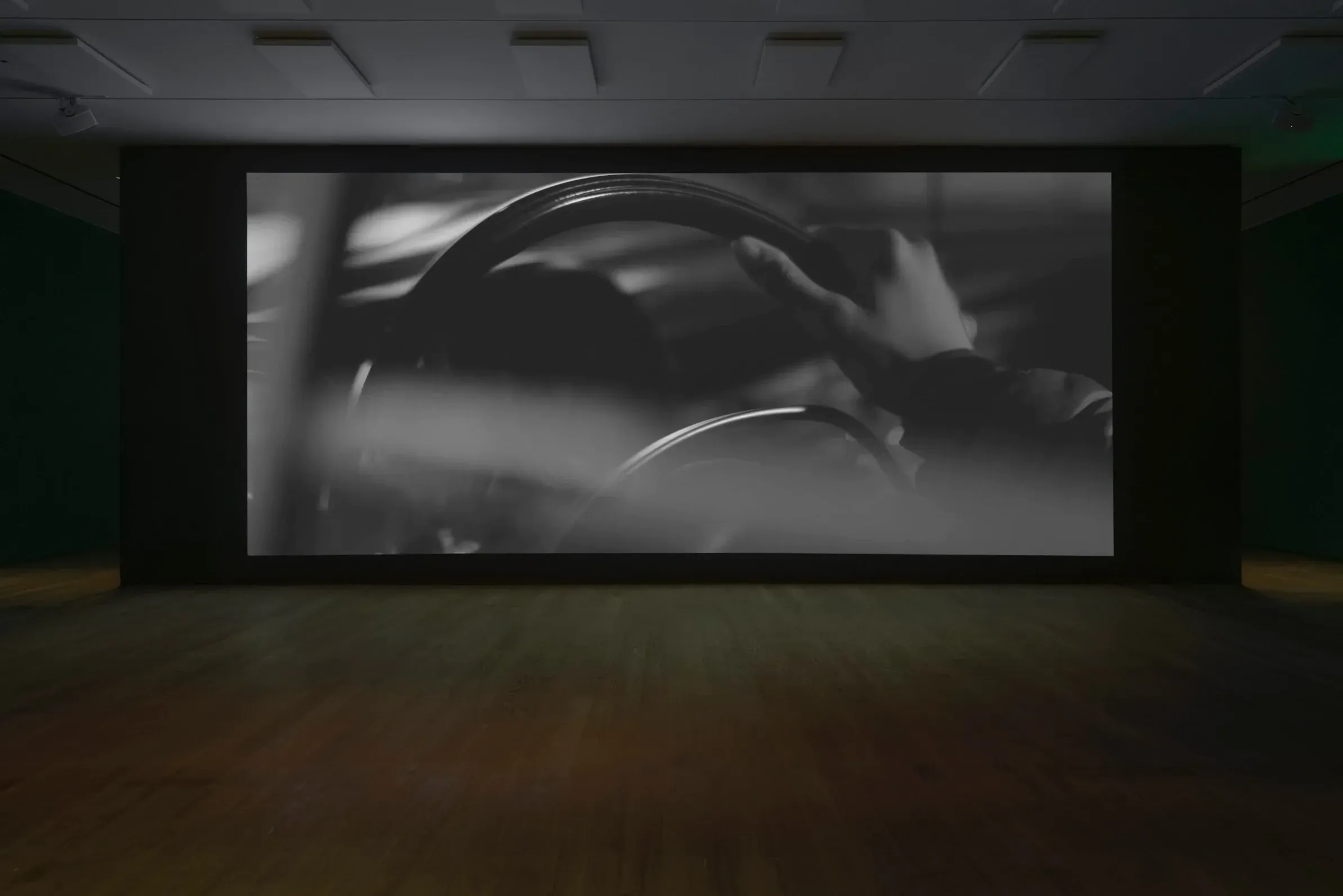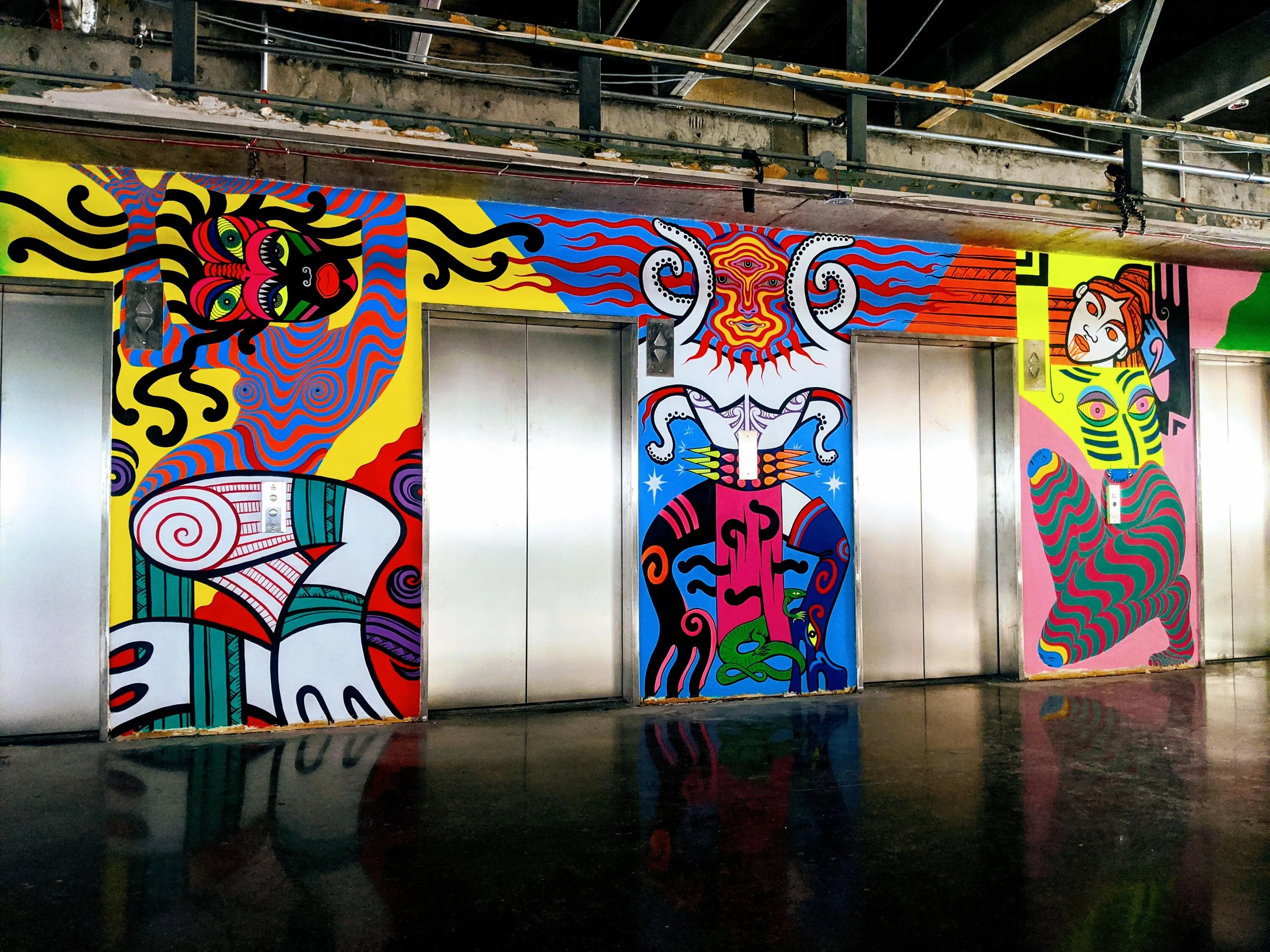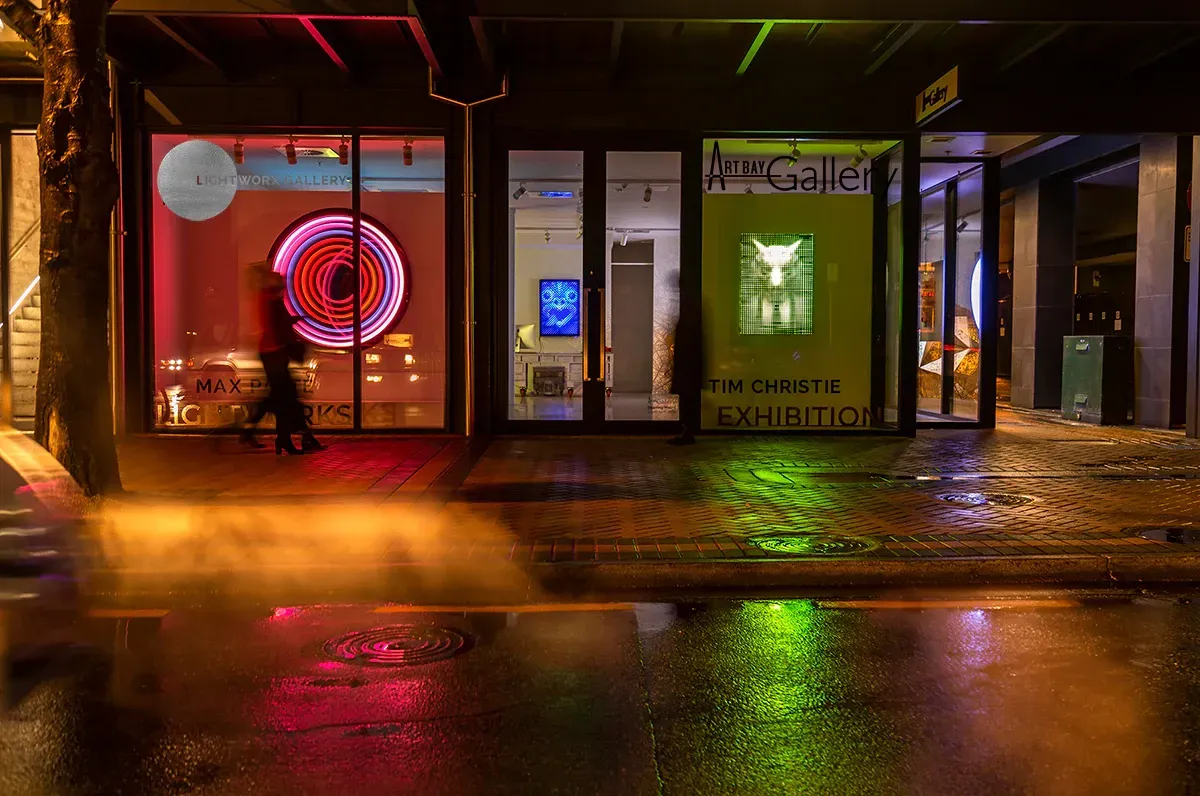Once in a Lifetime - But Will They Get it Right?
Written by
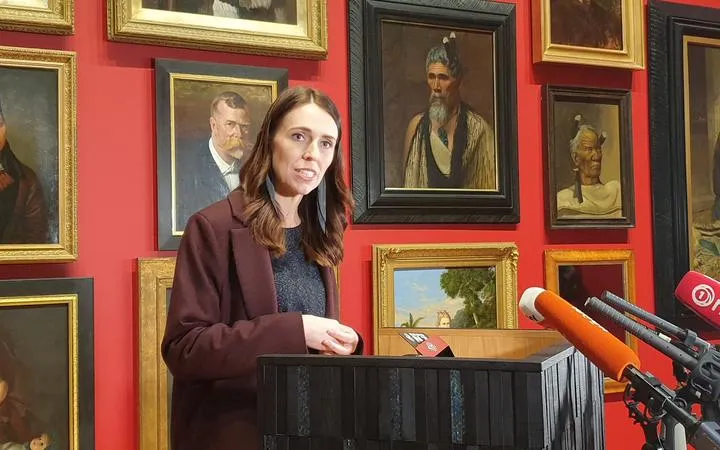
A landmark investment
Manatū Taonga, the Ministry of Culture and Heritage has opened consultancy with the arts and culture sector about three new funds that will provide a whopping $150 million. To put that in context Creative New Zealand in the 2018/2019 financial year gave out $48 million. And the timeframe for feedback is short - by next Tuesday 22 September.
Deputy Chief Executive in Policy and Sector Performance Anna Butler calls it a ”landmark investment” and a “unique generational opportunity” here on Youtube. These funds, she emphasises, are about the long-term, not short-term rescue packages.
The build, nonetheless, has been fast. They have been drawn up without consultancy on a strategy for arts and culture, or one being articulated by the government Nor is there any mention of the Heart of the Nation report (completed by the arts sector 20 years ago). The funds haven’t been given to Creative NZ - with all of their accumulated experience working with the sector and systems in place - to distribute (CNZ have new funds themselves they have started to consult the sector on).
It’s clear our Ministers want to keep this fund closer to them.
Butler emphasises that the proposals are “deliberately kept at a draft level” so they can hear feedback and help shape design.
The short timeline for feedback - a consultation period of 13 days - has to be a concern. Particularly in this COVID environment. It is, after all, a once-in-a-lifetime programme, delivered by a Ministry having to upskill quickly. It's been two years since Minister Grant Robertson was commenting on how under-resourced the Ministry had been left by the previous government.
This all said, the draft approach makes for very interesting reading.
Te Tahua Whakakaha Capability Fund of $20 million over two years ($8 milion of which is already allocated to CNZ, NZ Film Commission, NZ Music Commission and NZ On Air) is looking to invest widely in capability. It’s clear they’re looking to fund many organisations rather than just the biggest: asking for applications for up to $100,000 for proposals that benefit a single organisation or business, and up to $750,000 for proposals that benefit multiple organisations or businesses.
Te Tahua Whakahaumaru Creative Arts Recovery and Employment Fund, has an employment focus over four areas to the tune of $70 million over three years. Two areas are very defined: more large-scale public art installations - temporary and permanent - and more touring exhibitions, with the latter seeing galleries and museums working more collaboratively. These reflect, one can assume, the ministry’s existing direct work with the museum sector.
A third outcome speaks welcomingly to proposals “supporting wellbeing outcomes in the social sector”, an area under-resourced and a clear existing concern of this government.
The fourth area is to support internships, training and development schemes. You may note there’s nothing specifically there for performing arts projects.
Finally, the $60 million Te Tahua Āki Auahatanga Innovation Fund encourages “innovative practice and partnerships to change the way cultural content is made available to audiences.” Up top, they make it very clear that this fund has a strong focus on supporting Mātauranga Māori outcomes and that they will prioritise projects that seek to benefit Māori, Pasifika, people with disabilities and “other communities with identified need”. The scope makes clear they’re interested in both small-scale trial ideas, and medium and large scale projects.
In none of these three funds is there mention of a priority on more regional reach for the arts, something that has been a government concern. There are, as yet, no details or call for feedback from the sector on the process of assessment, or what systems will be in place to proactively go out and seek dynamic proposals.
North and South collaboration
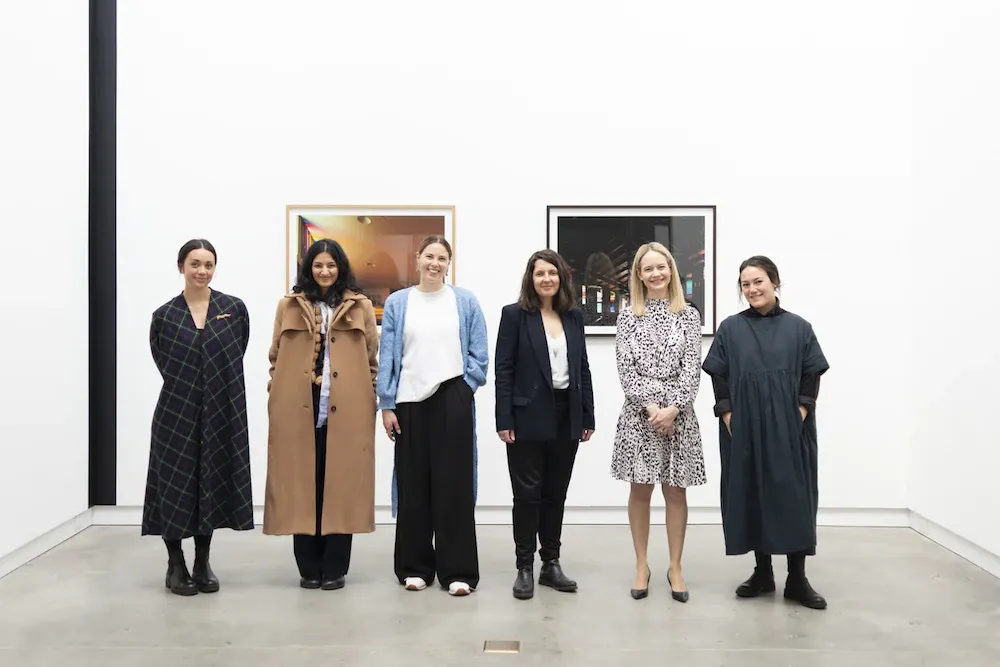
Objectspace and COCA representatives: Zoe Black, Sahar Lone, Jess Adlam, Kim Paton, Anna Ryan and Natalie Bascand. Photo Mitchell Bright.
I’m not a fan of arts organisations calling their own moves ‘radical and innovative’ (that’s where critics should be relied on) but it is an apt description of galleries Objectspace in Auckland and Centre of Contemporary Art (CoCA) in Christchurch announcing this week a partnership which will see a shared 12-month programme of exhibitions delivered across their galleries from March next year.
Ahead of the Ministry of Culture and Heritage’s own call for more collaboration, it’s a potential game-changer. Historically, Auckland and Christchurch have been in a kind of quiet two cities cultural stand-off, stemming from being home to what were the two leading art schools, Elam and Ilam.
But what arguably earns this move the label ‘radical’ is that, in an act of resilience and collaboration, they will share staff and resources (the team is here), and together visit artists across the country, as Objectspace director Kim Paton tells RNZ’s Lynn Freeman.
For Objectspace, it’s a good fit - this dynamic gallery has a national mandate through core CNZ funding to represent design, craft and architecture. Most other public galleries are local authority funded to serve their region. CoCA, meanwhile, is governed by the Canterbury Society of Arts and arguably doesn’t have the same surety of local council funding as Christchurch Art Gallery.
CoCA celebrates its 140th anniversary this year. This is just the latest interesting chapter in a remarkable exhibition history. The gallery reopened - restored after the earthquakes - with a bang in 2016, thanks to a more international focus and some major shows under a new director, Paula Orrell. Yet by 2018, Orrell had headed back to the UK and The Press reported on a $500,000 annual financial loss, with a move then to what has often been an innovative exhibition programme reflecting new ways of working for New Zealand artists.
In a COVID-19 affected environment, this new partnership looks like a smart move for CoCA in a building deserving of an Objectspace exhibition of iself.
Staying in Christchurch, RNZ reports that six staff positions have been cut at the Christchurch Arts Centre Te Matatiki Toi Ora. As previously reported in the Lowdown, chief executive Philip Aldridge has been very vocal in the press about their struggles financially since funding from Christchurch City Council was dropped in 2018.
Bright lights, big city
After closing gallery The Vivian in Matakana early in the year, Scott Lawrie has opened under his own name in Auckland’s Grey Lynn. Sait Akkirman of Artsdiary was at the opening with his camera for ‘Been There’.
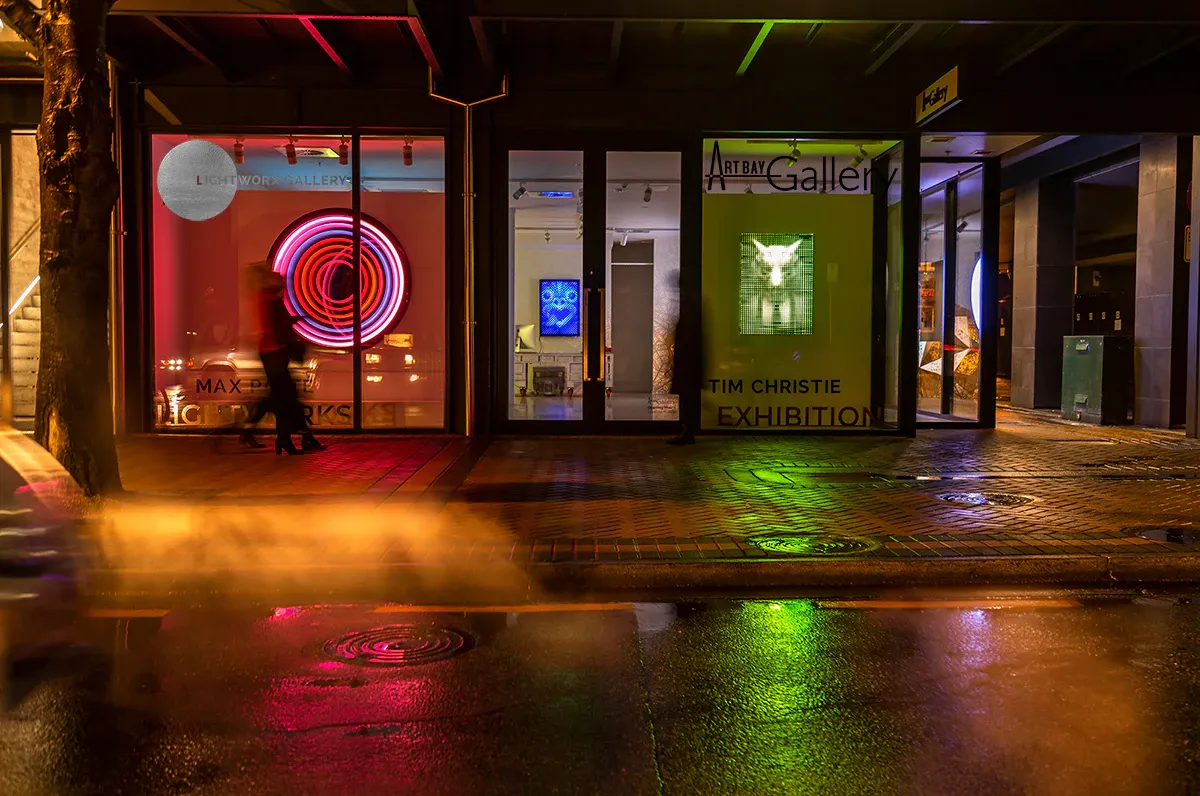
Lightworx Gallery, Queenstown.
Meanwhile, just in time for that announcement of increased seating on flights, Queenstown gallery Artbay have opened what’s probably New Zealand’s first gallery space solely devoted to light works - as the name Lightworx Gallery would suggest. The fact the gallery labels the work “avant-garde” and uses that ‘x’ in its title will give you a sense of where they are coming from.
A successful show earlier in the year by Max Patté - best known for the ‘Solace of the Wind’ sculpture on the Wellington waterfront - made Director Pauline Bianchi realise the demand for people’s homes. Other light work artists include Trish Campbell from Auckland, Wellington’s Tim Christie and San Francisco-based duo HYBYCOZO.
Do you want the good news or the bad news?
‘First to close. Last to reopen.’ That’s been the pained catchcry from the live entertainment industry worldwide.
In New Zealand that’s felt no more currently than in theatre. On Monday, more bad news as Auckland Theatre Company’s CEO Jonathan Bielski confirmed they are pulling their end-of-year musical Hedwig & The Angry Inch. It needs, Bieleski writes, “our entire theatre to be on sale and selling for it to work financially. With the extension of Alert Level 2 and the real possibility of further restrictions on audience sizes, the numbers just don’t work… After such a difficult year, we cannot risk a large financial loss from a production of such scale.”
ATC are currently trialling a “three zone, socially-distanced system” at ASB Waterfront Theatre for the Back on the Boards festival, which allows them to safely seat up to 265 people in three separate zones.
Will this also impact on another large metropolitan theatre, The Court in Christchurch? Their musical production Jersey Boys is due to open 21 November. An announcement next week that sees Canterbury drop to Level One may answer this. The Court COVID postponement announcements are made here.
There is better news in Rotorua where significant progress is reported on strengthening and redeveloping the Sir Howard Morrison Performing Arts Centre. It extends the Civic Theatre to seat up to 1000 people, and provides a new flexible, smaller black box theatre. Construction is due to start next month. It will be the central North Island’s only theatre of that size.
And also good news in Christchurch where The Little Andromeda theatre - a crucial new home for the independent performing arts - should, the NZ Herald reports, reopen in a newly built home by year’s end. The theatre is moving to a space next door to its current home, but with the offer of a 10-year lease and $200,000 worth of development work underway.
Tenei Te Wiki o Te Reo Māori
This week is Māori Language Week. And earlier this month we lost a great supporter of the performing arts and of te reo Māori, Ngāti Porou writer Keri Kaa. Kaa lectured at Wellington Teachers College for 15 years, and made a significant contribution to the development of contemporary Māori theatre, film-making and television. She was also involved in the Haeata Collective of Māori women artists. Dr Wayne Ngata offered this powerful obituary in the Dominion Post, and she is remembered in this Te Karere TVNZ item.
The Kiingi Tuheitia Portraiture Award is a new competition for emerging Māori artists to create portraits of their tūpuna in any medium. Here’s a great wee Facebook video in which artists talk about what the kupu (word) tūpuna means to them. Kia ora Jerome Kavanagh, Izzy Joy, Taryn Beri, Lenny Boonen and Miriama Grace-Smith.
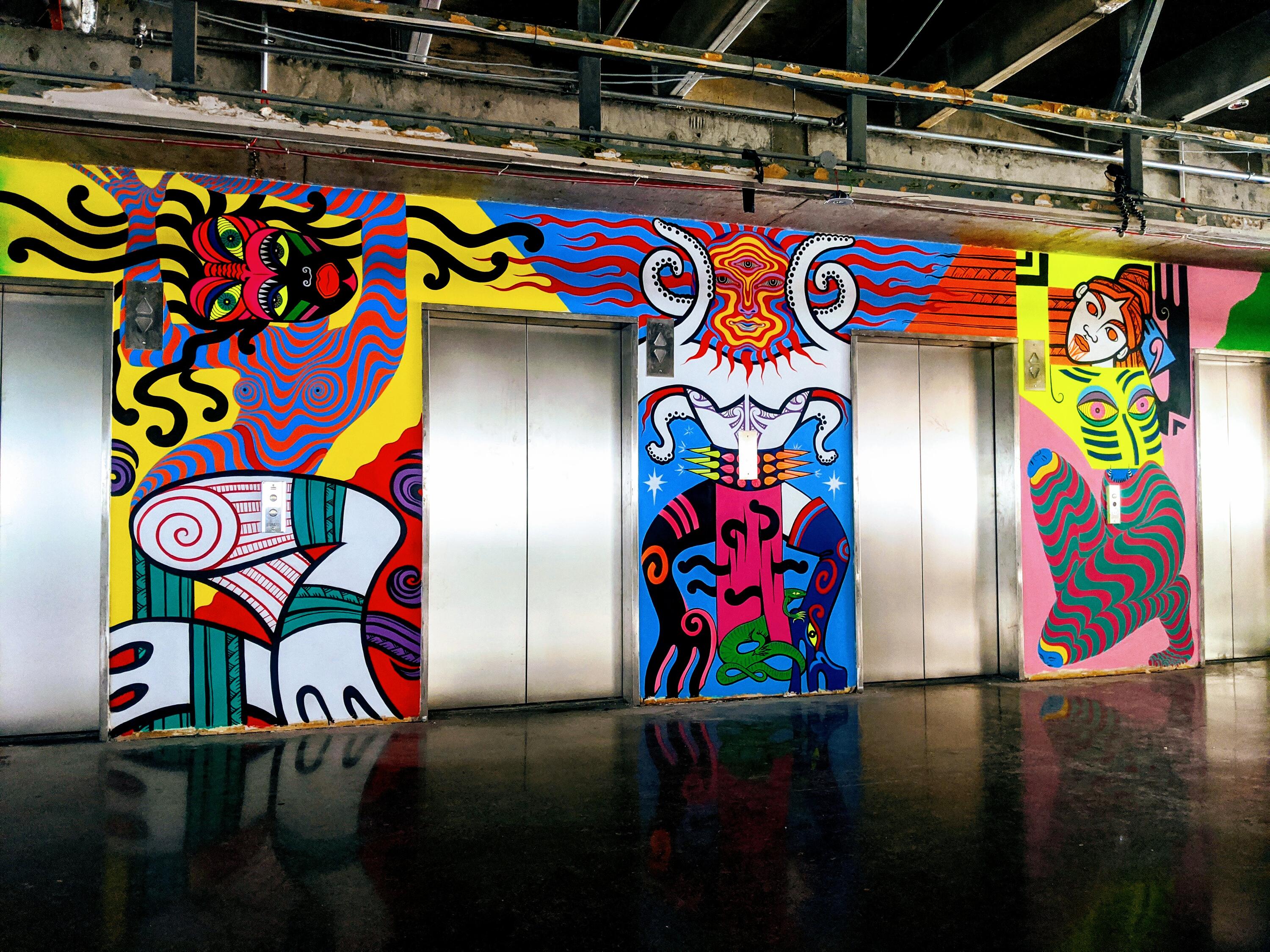
Two.Fiveseven columns work by Miriama Grace-Smith, Gina Kiel and Xoë Hall.
Grace-Smith is one of 17 artists creating works for the walls of a new independent co-share working space launching in Wellington, Two.Fiftyseven. One of its founders, Ash Holwell was also one of those behind the enduring and dynamic arts centre in Whangārei, Oneonesix. There’s strong current Māori representation: Grace-Smith has collaborated with Gina Kiel and Xoë Hall and also featured are Jessica Thompson, Chevron Hasset, Tayi Tibble, Theo Arraj, Holly Rocck, Jade Kake, The Hori, Mica Still, Kelly Spencer, Larissa McMillan, Taupuruariki Brightwell, Victor Tepaa, Nikau Hindin and Ayesha Green.
Over at the whare tapere online, is the Kōanga Festival from Te Pou Theatre. On at present online, is a reading of the play Kūpapa by Nicola Kawana, “drawing on her tūpuna's story of deceit and bravery” with a cracker cast of Māori wahine.
An International Place at the Kauri Table
An art installation and video artwork featuring the work and words of six immigrant New Zealand women artists as dinner settings at a table, ‘A Place at the Kauri Table’ has won first prize in the 2020 YICCA International Contest of Contemporary Arts in Milan, Italy. The work “shakes to the core the question of the female agency today,” writes Marta Jovanovic from YICCA. You can see a trailer for the work here.
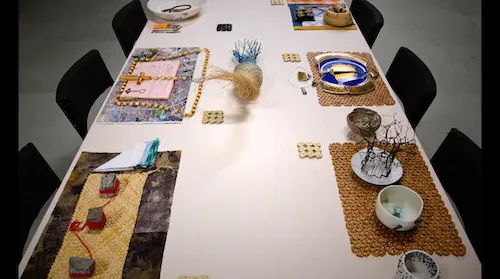
A Place at the Kauri Table - Video installation.
With clear inspiration from Judy Chicago’s iconic feminist ‘70s installation of a dinner party, the six artists are Mei Chueh Chao, filmmaker Helen Donnelly, artist and curator Deb Donnelly, Ōtaki textile fibre artist Birgit Moffatt, and interdisciplinary artists Marie Enslin and Lisa Silestean. They call themselves the Women Immigrant Artists Collective (website here), and the work presents their own migrant stories “in context of women’s rights in New Zealand.” Originally there was to be a physical exhibition of the 18 finalists in Milan but due to COVID, the exhibition was held online.
‘A Place at the Kauri Table’ is also a finalist in the Wallace Art Awards, with the finalist exhibition just opened this week in Auckland. The awards are to be presented when Auckland returns to Level One. You can also visit participating artist Birgit Moffatt during what will be the 20th Kāpiti Arts Trail north of Wellington in November.
Southern Creativity
Dunedin neo-expressionist painter Ewan McDougall is showing Unreal! In Dunedin with his paintings brought further to life through virtual reality by multimedia artist Claire Hughes, as reported in the Stuff story.
And great to see some creative use of quarantine time. In a Christchurch managed isolation facility, one returnee spent time creating sculptures for the staff out of the tinfoil covers their food stays warm with.
He wiki pai tenei ki te panui i tenei tuhinga
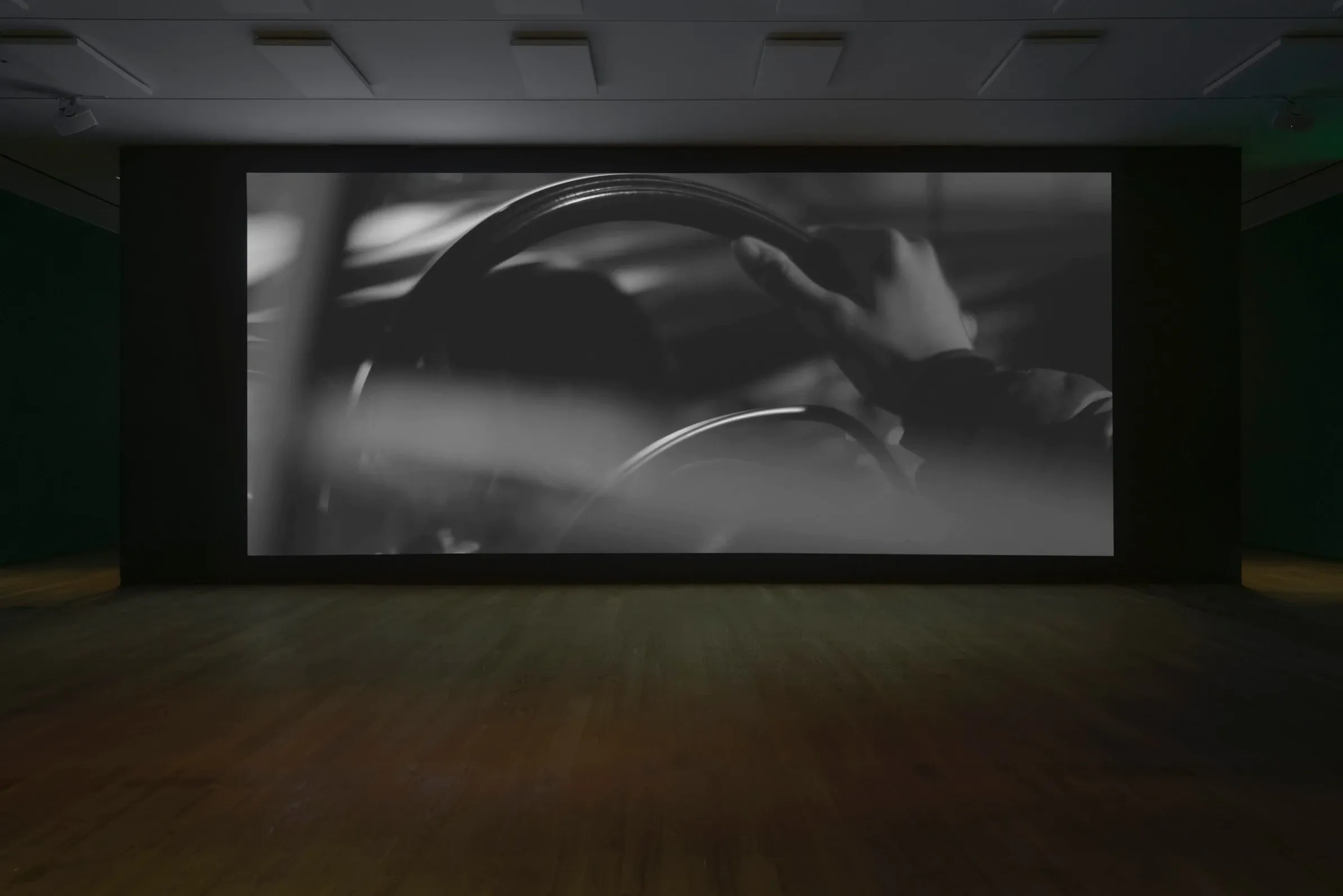
Installation view, Shannon Te Ao, 'Ka mua, ka muri', Remai Modern, Saskatoon, 2020. Photo: Blaine Campbell.
This is a good week to read this article on Contemporary Hum: Maya Wilson-Sanchez examines Shannon Te Ao's (Ngāti Tūwharetoa) 'Ka mura, ka muri', a two-channel video and sound installation at Remai Modern in Saskatoon, Canada, which continues Te Ao’s exploration of Māori oral tradition, and the function of language and its translation.
Over on Pantograph Punch, a new series sees the editors venturing out to the regions to meet creatives. First up, Ataria Sharman with weaver Tania Rule in Helena Bay, north of Whangārei.
Add to your favourites
Every year in March, we have been publishing The Lowdown Directory, a guide to all the New Zealand arts media resources I can find online. For good reading and arts news stories to spread, it’s a place to start (we update it annually).
I’m always finding platforms we’ve omitted. Here’s one: humorous.co.nz is a home for comedy in Wellington. It’s principally an events guide if you’re looking for a comedy gig in Pōneke but also provides a newsletter for performers, including newbies.
Amongst new 2020 platforms is the remarkable Jessica Hansell’s (AKA Coco Solid) online project Kuini Qontrol, in which she explores “writing, art and sound as political weapons of choice in the South Pacific.” I really enjoyed this month’s post, an interview with Kōtiro aka Ana Chaya Scotney, on the release of a video for her stunning song ‘Force Field’ aheads of a Summer EP launch HD Multinational.
Collision of Sexual Politics and Airborne Peril
Finally, while we hear plenty about Avatar, Taika and filming in Aotearoa during COVID a lot, less attention is being paid to a New Zealand filmmaker making a major Hollywood splash in the US.
Roseanne Liang’s action-horror feature Shadow in the Cloud has debuted at the Toronto International Film Festival. Chloe Grace Moretz plays a World War II women's auxiliary officer, taking off from Auckland with “more than enemy aircraft to worry about”. The Hollywood Reporter is in with a pretty good review. Indiewire calls it totally bonkers and “the year's craziest feminist adventure”, while Screendaily says it has “an elastic approach to credibility. But genre audiences prepared to embrace the exuberantly OTT silliness of some aspects should have fun with this collision of sexual politics and airborne peril.”
Want More of the Lowdown?
Check out past Arts Media Lowdowns here and subscribe here to our weekly bulletin so it comes straight to your inbox.
Our Annual Directory of Arts Online can be found here.
News and content ideas are welcomed for future editions of Arts Media Lowdown. Please send to mark.amery@thebigidea.co.nz
